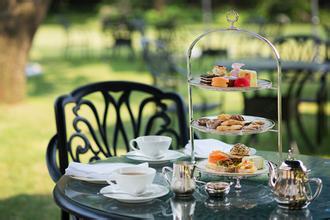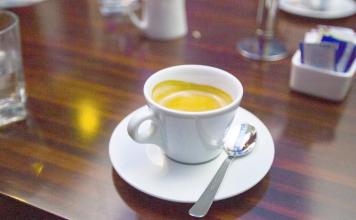Introduction to the varieties of Grinding scale in the production area of Antigua Flower God Coffee Bean in Guatemala
The aroma of coffee liberates all forms, hearts and borders. Through coffee, the mood leaves the country at any time and lands in a strange country half a world away. Even if separated from the world, but also can share a mood. Antigua was the Spanish colonial capital in 1543. Although this emerald valley has been surrounded by active volcanoes on all sides, layers, deliberately rising and dangerous since ancient times, its vastness, breadth and fertility still lured the Spanish to establish their capital in the precarious cliff valley.
Volcanoes once destroyed this originally prosperous capital in an instant, and all the prosperity and beauty were taken away overnight. After this transformation of the mountain city, more than 200 years of brilliance disappeared, Antigua no longer strutted. Antigua, now plain, is laboriously managed by the remaining Indians. These hard-working Indians became coffee producers, who not only discovered the rich and attractive aroma of Antigua coffee, but also brought it to people all over the world. Today Antigua Coffee enjoys a reputation for being the best quality coffee in the world and is considered by coffee connoisseurs to be the finest and most distinctive coffee in the world.
Antigua coffee is sought after by most coffee lovers because of its distinctive aroma. Because it is planted on the belly of volcanoes, it can retain its own characteristics more than Costa Rica, mainly because it has more geographical and climatic advantages than Costa Rica. Guatemala is located in the tropics, but due to its high altitude, the climate is mild and subtropical. Coffee trees bloom and bear fruit slower than coffee trees in other parts of the world under the influence of this climate. However, the mild climate combined with fertile soil creates an excellent environment for growing coffee.
These Mayan-run coffee industries once made Guatemala's economy prosperous and occupied a dominant position in the national economy. Unfortunately, however, the political situation in Guatemala is not conducive to these coffee growers. High output is usually a sign of overall economic prosperity in a country. However, coffee production in Guatemala has declined relatively, to only 700 kg/ha, compared with 900 kg/ha in El Salvador and a staggering 1700 kg/ha in Costa Rica. Guatemala's coffee export trade is controlled by private companies, but the National Coffee Council controls other sectors of the coffee industry.
Some of Guatemala's finest coffee is currently exported to Japan, where it sells for $3 to $4 a cup. In order to revitalize its coffee industry, Guatemala has set up a special coffee association and given maximum support and attention to these high-quality coffees. These efforts will soon bear fruit, and the real beneficiaries are not only coffee growers, but coffee lovers all over the world.

Important Notice :
前街咖啡 FrontStreet Coffee has moved to new addredd:
FrontStreet Coffee Address: 315,Donghua East Road,GuangZhou
Tel:020 38364473
- Prev

Flavor description of sun-cured Yejafevoca coffee beans introduction of varieties by taste treatment
Yega Xuefei is a small town, 700-2100 meters above sea level, synonymous with Ethiopian boutique coffee. It has been a wetland since ancient times. The ancient saying "Yirga" means to settle down and "Cheffe" means a wetland. The mode of production and flavor of coffee here are so outstanding that Ethiopian coffee farmers compete to be proud of the flavor of their coffee, making it the best in Africa.
- Next

Flavor description of Costa Rican Tarazu Coffee beans introduction to the taste of grinding scale treatment
Other kinds of Brazilian coffee, such as Rio and Parana, can be produced in large quantities because they do not need too much care. Although the taste is rough, it is a kind of good and cheap coffee. It has its own standard because it is distributed all over the country and its solid quality varies. It has its own standard (NO.2~NO.8 according to the number of sundries, NO.13~NO.19 according to the size of beans, and six grades according to taste).
Related
- Detailed explanation of Jadeite planting Land in Panamanian Jadeite Manor introduction to the grading system of Jadeite competitive bidding, Red bid, Green bid and Rose Summer
- Story of Coffee planting in Brenka region of Costa Rica Stonehenge Manor anaerobic heavy honey treatment of flavor mouth
- What's on the barrel of Blue Mountain Coffee beans?
- Can American coffee also pull flowers? How to use hot American style to pull out a good-looking pattern?
- Can you make a cold extract with coffee beans? What is the right proportion for cold-extracted coffee formula?
- Indonesian PWN Gold Mandrine Coffee Origin Features Flavor How to Chong? Mandolin coffee is American.
- A brief introduction to the flavor characteristics of Brazilian yellow bourbon coffee beans
- What is the effect of different water quality on the flavor of cold-extracted coffee? What kind of water is best for brewing coffee?
- Why do you think of Rose Summer whenever you mention Panamanian coffee?
- Introduction to the characteristics of authentic blue mountain coffee bean producing areas? What is the CIB Coffee Authority in Jamaica?

